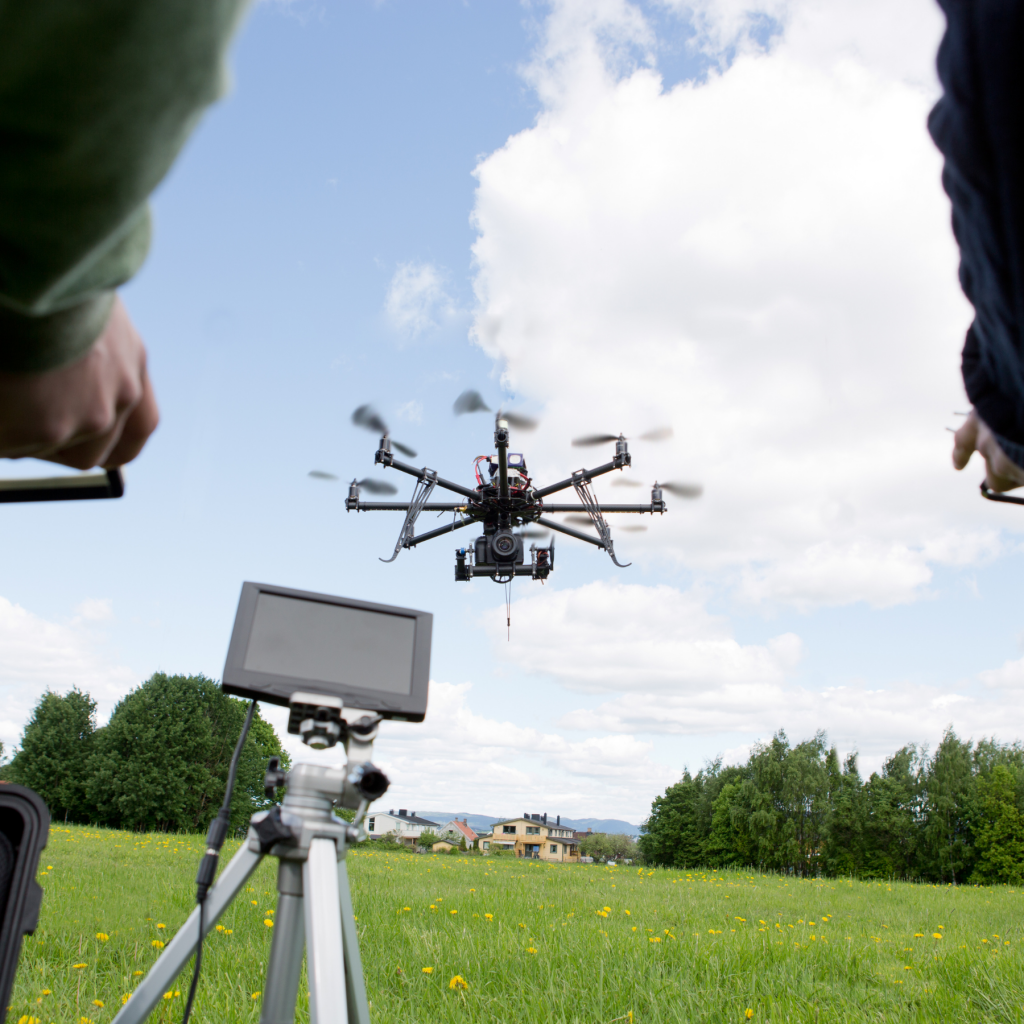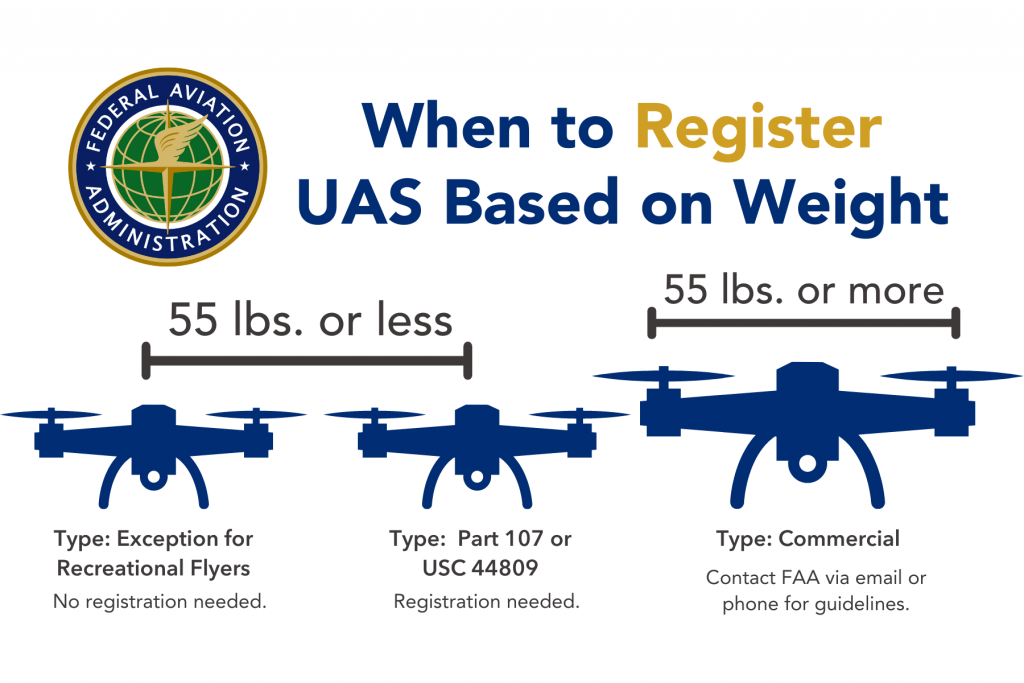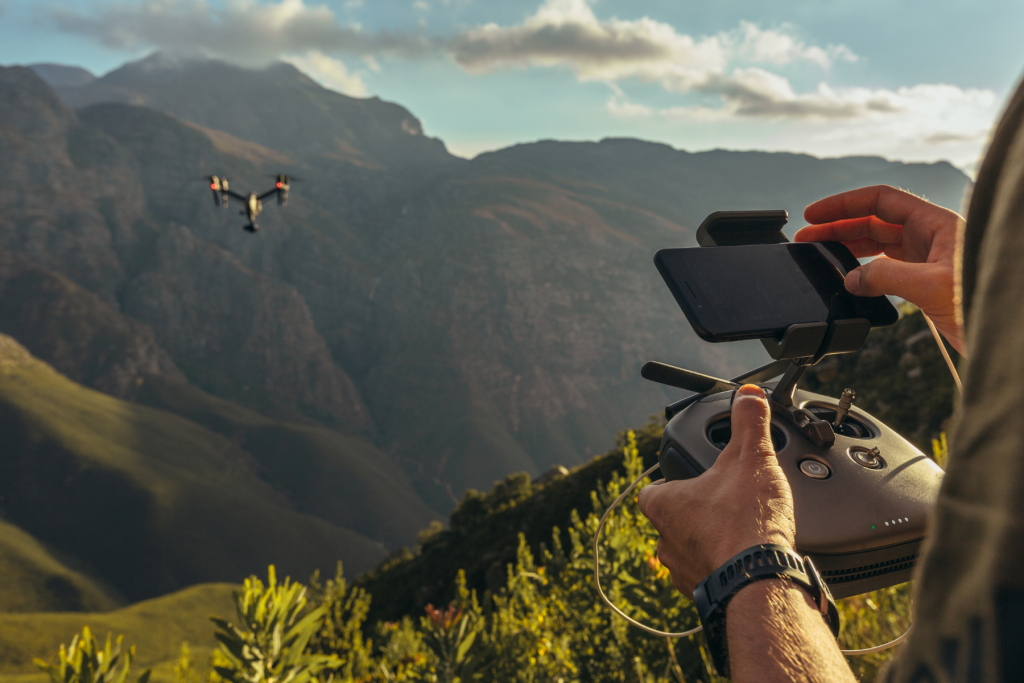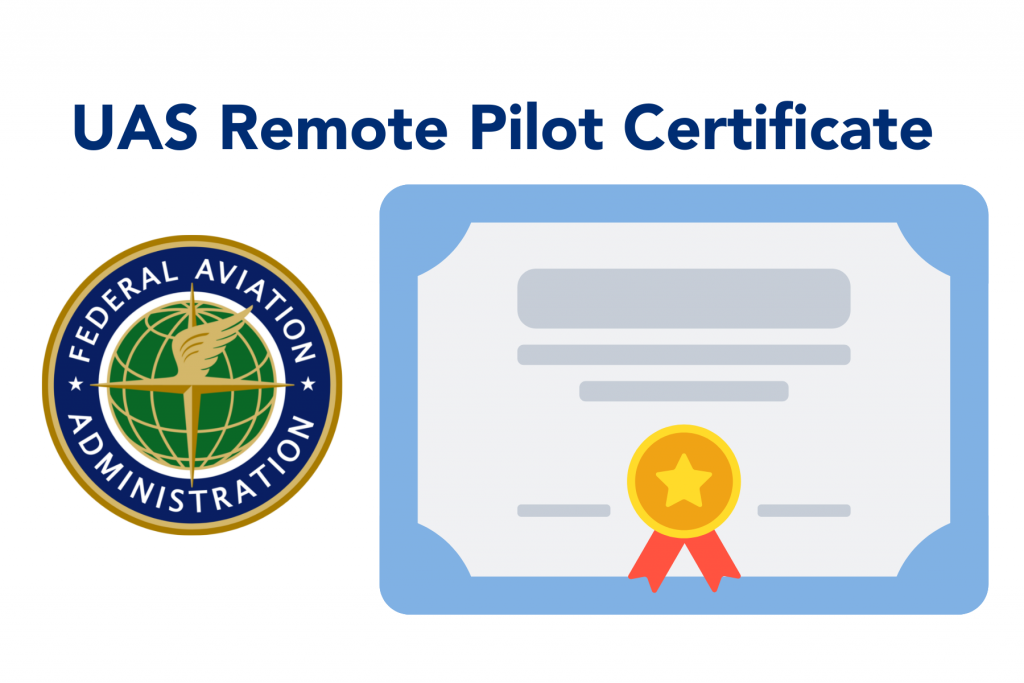
Unmanned Aircraft Systems (UAS) – Drones
Unmanned Aircraft Systems (UAS), also referred to as Drones come in a variety of shapes and sizes and are flown for many different purposes. Integration of UAS into the national airspace can become challenging for the user, aviation community and governing agencies to insure a safe and efficient way of using UAS.
UAS technology continues to evolve, and therefore agency rules and policies must be flexible to accommodate a constant change to these processes. An educational checklist has been provided to get a better understanding of operational issues, rules and regulations, and resources.
- Type of UAS Operations
- User Identification Tool
- UAS – Weight Category
- Register Your Drone
- The Recreational UAS Safety Test (TRUST)
- Pilot Certificate
- Mobile Applications
- Resources

Types of UAS Operations
Determine what type of drone operating will be done. Rules and safety tips exist to help you fly in the national airspace. Once you determine what type of drone user you are, you can apply the appropriate rules and regulations to your specific type of flying.
- Recreational Flyer (USC 44809)
- Community- Based Organization (Advisory Circular 91-57B)
- Certified Remote Pilot / Commercial Operator (14 CFR Part 107 Guidelines)
- Public Safety or Government User (Public Aircraft Operation , ( 49 U.S.C))
- Educational User (Drone Rules for Education)
Remember, the default regulation for drones weighing under 55 pounds is Part 107. The exception for recreational flyers only applies to flights that are purely for fun or personal enjoyment. When in doubt, fly under Part 107.

User Identification Tool
If you are unsure what type of user you are, you can use the User Identification Tool for guidance. The User Identification Tool provides a short series of yes or no questions that will guide you to understand what type of user operations will be conducted based on your answers. The result will provide you with what type of operator you are, what type of guidelines to operate under, and FAA UAS contact information. User questions include but are not limited to items below.
- Are you a Government Agency?
- Are you a Citizen of the United States?
- Are you flying for business of commercial enterprise?
- Does your drone weigh more than 55 pounds?
- Are you at least 16 years old?
- Does your operation involve package delivery or agricultural spraying?

UAS – Weight Category
UAS operations have specific requirements based on the weight of the Drone.
- Flying a drone 55 pounds or less and flown exclusively under Exception for Recreational Flyers does not need to be registered.
- Flying a drone below 55 pounds following Part 107 or USC 44809 guidelines will need to be registered.
- Flying a drone 55 pounds and above, you must contact FAA via email or phone (UAShelp@faa.gov or 884 FLY-MYUA) for guidelines on Airworthiness Certification or Special Authority for Certain Unmanned Systems (U.S.C. 448007).

Register Your Drone
All UAS-Drones must be registered with the FAA. When registering your Drone, you must register it based on the type of flying. You must select the appropriate type of registration.
- Part 107
- Exception for Recreational Flyers
Register you drone online or by mail on the Federal Aviation Administration (FAA) website. Information on registration fees, qualifications, requirements, and registration renewal can be found on the Register your Drone section of the FAA UAS webpage.

The Recreational UAS Safety Test (TRUST)
Recreational flyers are required by FAA to pass an aeronautical knowledge and safety test known as The Recreational UAS Safety Test (TRUST).
This test provides education and testing for recreational flyers on important and safety regulatory information. Upon completing of the TRUST, a certificate of completion will be provided.
It is up to the user to keep records of the certificate. The test can be taken through FAA approved test administrators listed on the FAA website The Recreational UAS Safety Test (TRUST) (faa.gov).

Pilot Certificate
Flying an unmanned aircraft that weigh less than 55 pounds (25kg) for work, business, or under FAA’s Small UAS Rule (Part 107) will require a Remote Pilot Certificate from the FAA.
To become an FAA- Certified Drone Pilot, you must be able to meet the requirement below, you must:
- Be at least 16 years old
- Be able to read, write, and speak English
- Be in physical and mental condition to safely fly a UAS
- Pass a knowledge test
- Register your Drone
- Keep your Remote Pilot Certificate Current
If you are an existing Part 61 Certificate holder, you must be able to meet the requirement below, you must:
- Hold a pilot certificate issued under 14 CFR Part 61
- Have completed a flight review within the previous 24 months
Review the full process to get your Remote Pilot Certificate on the FAA Commercial Operators webpage.

Mobile Application
FAA has developed preflight planning website and mobile app (B4UFLY) to improve the recreational user experience that allows the user to know if it is safe to fly your drone. Interactive maps will provide guidance on where users can and cannot fly. Key features include:
- A clear “status” indicator that informs the operator whether it is safe to fly or not. (For example, it shows flying in the Special Flight Rules Area around Washington, D.C. is prohibited.)
- Informative, interactive maps with filtering options.
- Information about controlled airspace, special use airspace, critical infrastructure, airports, national parks, military training routes and temporary flight restrictions.
- The ability to check whether it is safe to fly in different locations by searching for a location or moving the location pin.
- Links to other FAA drone resources and regulatory information.
Access B4UFLY information for web and mobile on the FAA website on the B4UFLY Mobile App webpage.

Resources
Federal and state resources available to operators regarding UAS operations, safety, regulation, and guidance can be found below.
Federal Aviation Administration
Unmanned Aircraft Systems (UAS)
Small Unmanned Aircraft Rule (Part 107)
Commercial Operators Part 107 Waiver
State of California
Unmanned Aircraft Systems: Caltrans
Department of Defense
Unmanned Aircraft Systems (UAS) – Purpose and Operational Use
Guidance for Domestic Use of Unmanned Aircraft Systems in U.S National Airspace

Other Weblinks
USC 44809
Exception for limited recreational operations of unmanned aircraft
Advisory Circular 91-57B
Exception for Limited Recreational Operations of Unmanned Aircraft
14 CFR Part 107 Guidelines
Public Aircraft Operation 49 U.S.C
Qualifications for public aircraft status
Drone Rules for Education
FAA Drones for Educational Users
User Identification Tool
What Kind of Drone Flyer Are You?
Special Authority for Certain Unmanned Systems (U.S.C. 44807)
Airworthiness Certification Process
Register your Drone
Remote Pilot Certificate
Certificated Remote Pilots including Commercial Operators
LAANC
B4UFLY Mobile App
The Recreational UAS Safety Test (TRUST)